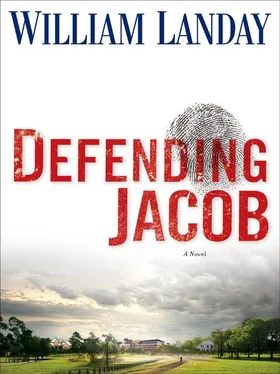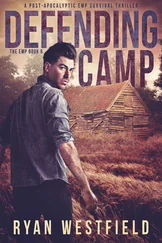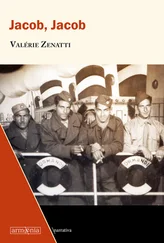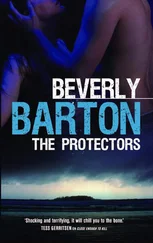William Landay - Defending Jacob
Здесь есть возможность читать онлайн «William Landay - Defending Jacob» весь текст электронной книги совершенно бесплатно (целиком полную версию без сокращений). В некоторых случаях можно слушать аудио, скачать через торрент в формате fb2 и присутствует краткое содержание. Жанр: Криминальный детектив, на английском языке. Описание произведения, (предисловие) а так же отзывы посетителей доступны на портале библиотеки ЛибКат.
- Название:Defending Jacob
- Автор:
- Жанр:
- Год:неизвестен
- ISBN:нет данных
- Рейтинг книги:2.33 / 5. Голосов: 3
-
Избранное:Добавить в избранное
- Отзывы:
-
Ваша оценка:
- 40
- 1
- 2
- 3
- 4
- 5
Defending Jacob: краткое содержание, описание и аннотация
Предлагаем к чтению аннотацию, описание, краткое содержание или предисловие (зависит от того, что написал сам автор книги «Defending Jacob»). Если вы не нашли необходимую информацию о книге — напишите в комментариях, мы постараемся отыскать её.
Defending Jacob — читать онлайн бесплатно полную книгу (весь текст) целиком
Ниже представлен текст книги, разбитый по страницам. Система сохранения места последней прочитанной страницы, позволяет с удобством читать онлайн бесплатно книгу «Defending Jacob», без необходимости каждый раз заново искать на чём Вы остановились. Поставьте закладку, и сможете в любой момент перейти на страницу, на которой закончили чтение.
Интервал:
Закладка:
“I don’t make the rules,” the cop explained simply.
“It doesn’t say anything! That’s, like, my whole thing! It doesn’t say what he says it says! Anyway, I already told him I’ll put it away. I told him! I told him like a million times but he won’t listen. It’s not fair.”
The girl was about to cry, which reminded me of the grown woman I had just left on the sidewalk also near tears. Jesus, there was no escaping them.
“Well,” I suggested to the cop, “I think it’ll be okay if she just leaves it in her locker, don’t you? I can’t imagine what harm could come of it. I’ll take responsibility.”
“Hey, you’re the boss. Whatever you want.”
“And tomorrow,” I said to the girl, to make it up to this cop, “maybe you’ll leave that sweatshirt at home.”
I winked at her, and she gathered up her things and quick-marched away down the hall.
I took a position shoulder to shoulder with the affronted cop and together we looked out through the school doors toward the street.
A beat.
“You did the right thing,” I said. “Probably should have kept my nose out of it.”
It was bullshit, of course, both sentences. No doubt the cop knew it was bullshit too. But what could he do? The same chain of command that compelled him to enforce a stupid rule now compelled him to defer to some hulking dumb-ass lawyer in a cheap suit who did not know how hard it was to be a cop and how little of the cops’ work ever made it into the police reports that found their way to the clueless virginal DAs all sealed up in their courthouses like nuns in a convent. Pfft.
“It’s nothing,” the cop told me.
And it was nothing. But I stood there awhile, anyway, presenting a united front with him, to be sure he knew whose team I was on.
4
The Middlesex County Courthouse, where the DA’s office was headquartered, was an unrelievedly ugly building. A sixteen-story tower built in the 1960s, the exterior facades were molded concrete in various rectangular shapes: flat slabs, egg-crate grids, arrow-slit windows. It was as if the architect had banned curved lines and warm building materials in an effort to make the place as grim as possible. Things did not get much better inside. The interior spaces were airless, yellowed, grimy. Most offices had no windows; the solid block shape of the building entombed them. The modern-style courtrooms were windowless too. It is a common architectural strategy to build courtrooms without windows, to enhance the effect of a chamber isolated from the everyday world, a theater for the great and timeless work of the law. Here they need not have bothered: you could spend whole days in this building and never see sun or sky. Worse, the courthouse was known to be a “sick building.” The elevator shafts were lined with asbestos, and every time an elevator door rattled open, the building coughed out a cloud of toxic particulate into the air. Soon enough the whole ramshackle thing would have to be shut down. But for now, for the lawyers and detectives inside, the shabbiness did not matter much. It is in seedy places like this that the real work of local government so often gets done. After a while, you stop noticing.
Most days I was at my desk by seven-thirty or eight, before the phones really got going, before first call at nine-thirty. But with Jacob’s school reopening that morning, I did not get in till after nine. Anxious to see the Rifkin file, I immediately closed my office door, sat down, and arrayed the murder scene photos across my desk. I propped one foot on an open drawer and leaned back, staring at them.
At the corners of my desk, the photo-wood laminate had begun to peel away from the pressboard desk. I had a nervous habit of picking at these corners unconsciously, prying up the flexy laminate surface with my finger like a scab. I was sometimes surprised to hear the rhythmic clicking sound it made as I lifted and snapped it. It was a sound I associated with deep thought. That morning, I’m sure, I was ticking like a bomb.
The investigation felt wrong. Strange. Too quiet, even after five long days of digging. It is a cliche but it is true: most cases break quickly, in the frantic hours and days right after a murder, when the noise is everywhere, evidence, theories, ideas, witnesses, accusations-possibilities. Other cases take a little longer to sort out, to pick out the right signal in that noisy environment, the true story among many plausible ones. A very few cases never get solved. The signal never does emerge from the static. Possibilities abound, all plausible, none confirmable, none provable, and that is how the case ends. But in every case there is always noise. There are always suspects, theories, possibilities to consider. Not in the Rifkin murder. Five days of silence. Somebody stitched three holes in a line across that boy’s chest and left nothing to indicate who or why.
The tantalizing anxiety this caused-in me, in the detectives working the case, even in the town-was beginning to grate. I felt like I was being toyed with, purposely manipulated. A secret was being kept from me. Jacob and his friends have a slang term, mindfuck, which describes tormenting someone by misleading him, usually by withholding a crucial fact. A girl pretends to like a boy-that is a mindfuck. A movie reveals an essential fact only at the end, which changes or explains everything that went before- The Sixth Sense and The Usual Suspects, for example, are what Jake calls mindfuck movies. The Rifkin case was beginning to feel like a mindfuck. The only way to explain the complete dead silence in the aftermath of the murder was that someone had orchestrated all this. Someone out there was watching, enjoying our ignorance, our foolishness. In the investigation phase of a violent crime, the detective often conceives a righteous hate for the criminal before he has any idea who the criminal is. I did not usually feel that sort of passion about any case, but I disliked this murderer already. For murdering, yes, but also for fucking with us. For refusing to submit. For controlling the situation. When I did finally learn his name and face, I would merely adjust my contempt to fit him.
In the murder scene photos spread out before me, the body lay in the brown leaves, twisted, face up toward the sky, eyes open. The images themselves were not especially grisly-a boy lying in the leaves. Anyway, gore itself did not usually faze me. Like many people who have been exposed to violence, I confined my emotions within a narrow range. Never too high, never too low. Since I was a kid, I have always made sure of that. My emotions ran on steel rails.
Benjamin Rifkin was fourteen years old, in eighth grade at the McCormick School. Jacob was a classmate but barely knew him. He told me Ben had a reputation at school as “kind of a slacker,” smart but not much of a student, never in the advanced classes that filled Jacob’s schedule. He was handsome, even a little flashy. He often wore his short hair swept up in front with something called hair wax. Girls liked him, according to Jacob. Ben liked sports and was a decent athlete, but he was more into skateboarding and skiing than team sports. “I didn’t hang out with him,” Jacob said. “He had his own crew. They were all a little too cool.” He added, with the casual acid of adolescence, “Everybody’s all into him now, but before, it was like nobody even noticed him.”
The body was found on April 12, 2007, in Cold Spring Park, sixty-five acres of pine woods that bordered the school grounds. The woods were veined with jogging paths. They crisscrossed one another and led, through many branchings, to a main trail that ringed the perimeter of the park. I knew these trails pretty well; I jogged there most mornings. It was along one of the smaller trails that Ben’s body had been flung facedown into a little gully. It slid to a stop at the foot of a tree. A woman named Paula Giannetto discovered the body as she jogged past. The time of discovery was precise; she switched off her jogging watch as she paused to investigate at 9:07 A.M. -less than an hour after the boy had left his home for the short walk to school. There was no blood visible. The body lay with its head downhill, arms extended, legs together, like a graceful diver. Giannetto reported that the boy was not obviously dead, so she rolled him over hoping to revive him. “I thought he was sick, maybe he passed out or something. I didn’t think-” The medical examiner would later note that the body’s inverted position on sloping ground, feet above head, may have accounted for the unnatural flush of the face. Blood had drained into the head, causing “lividity.” When she rolled the boy over, the witness saw the front of his T-shirt was sopped in red blood. Gasping, she stumbled and fell backward, crabbed a few feet away on her palms and heels, then got up and ran. The position of the body in the murder scene photos-twisted, face up-therefore was not accurate.
Читать дальшеИнтервал:
Закладка:
Похожие книги на «Defending Jacob»
Представляем Вашему вниманию похожие книги на «Defending Jacob» списком для выбора. Мы отобрали схожую по названию и смыслу литературу в надежде предоставить читателям больше вариантов отыскать новые, интересные, ещё непрочитанные произведения.
Обсуждение, отзывы о книге «Defending Jacob» и просто собственные мнения читателей. Оставьте ваши комментарии, напишите, что Вы думаете о произведении, его смысле или главных героях. Укажите что конкретно понравилось, а что нет, и почему Вы так считаете.












